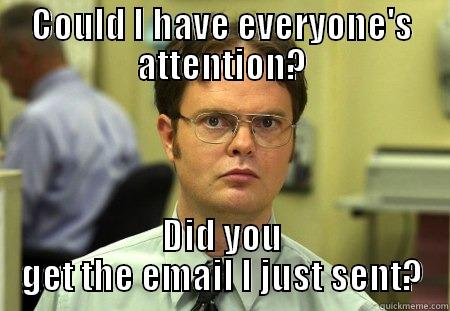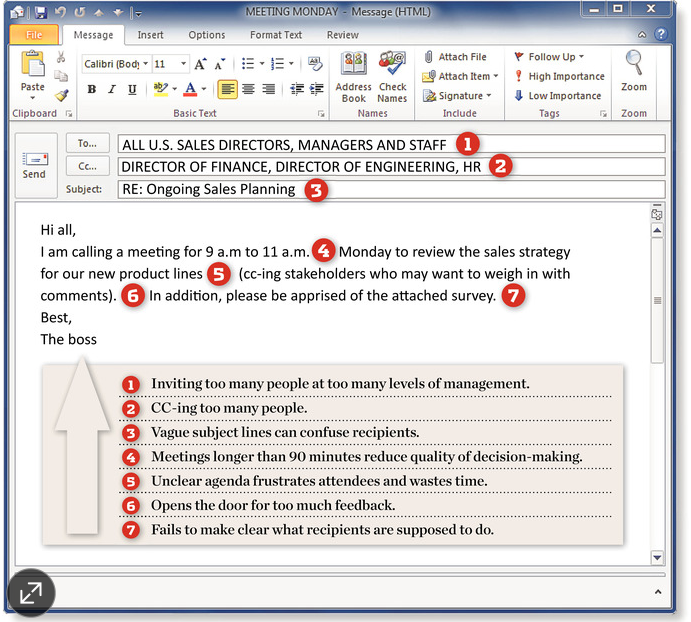When you work in an office with a small team, it’s easy to cultivate a culture of co-dependence. After all, the email, the document, or the customer name that you need is just a shoulder tap away.
But relying on other people for information causes unnecessary friction in your workflow and directly hinders everyone’s productivity. Every time you tap someone on the shoulder you assume that what you need is more important than what they’re doing. It creates an entire culture around disruptiveness, where no one hesitates to interrupt their peers for their own needs.

Wouldn’t it be great if you didn’t have to ask anyone for information? If it were just readily available, right at your fingertips? For remote companies, it has to be this way.
Because remote companies tend to have employees scattered across the world, they are forced to put truly strong systems in place. As a result, everyone in a remote company is as productive as possible, because no one has to rely on other people to get the information they need.
No Knowledge Hoarding
Knowledge hoarding is when people are gatekeepers to critical information that everyone depends on. This means every time someone needs that information, they have to seek out that person, costing you and the information gatekeeper precious work time.

This becomes an even bigger problem when a key member of the staff leaves and takes all their hoarded information with them. This constant quest for the right info from the right people costs every party involved. In fact, studies have shown that this type of disarray can have a direct impact on company morale and can lead to high turnover rates.
Document Everything Like a Remote Company Would
Documentation eliminates gatekeepers because it serves as a central repository of information. Any employee can access those meeting notes, the client emails, or even the work-from-home policy without having to bother a fellow employee.
Great documentation not only serves as an index for all employees trying to access information, but it also serves as clarifying information on what your startup is, how it functions cohesively, and what its missions and values are. Here are the three steps to getting everything documented.
- Pick a collaborative program. This can be an internal tool built for your company, or collaborative software like Evernote, Process Street or Quip. Whichever you choose has to be accessible to every employee.
- Delegate documentation duties. Pick employees who are in the best position to be able to contribute to the documentation. The important thing is to delegate not just the work, but the entire problem. Give your documenter total ownership over the project to avoid ironic back-and-forths.
- Institute documentation checks and balances. If you want your documentation to be bullet-proof, you need it to go through rounds of feedback. Have your documenter run the documents past several peer revisions and questions.
Documentation also enables you to see your processes laid out, so that you can adjust and improve them as time goes on. If a member of the team comes up with a better process they can work with the team to make adjustments. As a result, the documentation becomes a collection of best practices, constantly improving your company’s systems.
Autonomous Employees
Many startup founders take a hands-on approach. After all, the startup is their creation, so they don’t want anyone messing it up. But no one has all the skills necessary to found and run a company alone. Recognize that the ability to hire excellent employees gives you people with different skills and expertise who will help improve the company in ways that you wouldn’t have even imagined.

Laura Roeder, founder of content distribution startup Edgar, had to take a maternity leave from her few-month-old company. This would be the doom of some startups, but not Laura’s. Because she had autonomous employees she could trust, the company continued growing and even increased their MRR by 47% during her 3-month absence.
Hire People You Can Trust
Getting great employees naturally starts in the hiring process. Many startups look for candidates with impressive resumes—people that have a proven track record of being hard-working and good at following directions. The kind whose resumes have buzzwords like “multi-tasking skills” and “critical-thinking skills.”
Instead of looking for experience, look for people that have the character to learn and grow with your business. Of course, this is more difficult to sniff out in an interview than accomplishments, so here are some tips for what to look for.
- Hire for passion. Make sure that the person would genuinely enjoy the day-to-day—engineers who love to engineer, sales reps who love to sell, etc.
- Hire people better than you. Don’t hire people with the same skill-set and interests as you, hire people who impress you. The more diversity in thinking there is, the better off your company will be.
- Hire humble people. Look for people who are focused on self-improvement and don’t brag about their skills and accomplishments. Studies have shown that these people tend to be harder workers and more dedicated employees.
Once you have a team of people you can trust, delegate responsibilities so that they can have autonomy in their work. This way, each employee will contribute to the operation and growth of your startup.
Time-Efficient Teamwork
Think about how often a meeting called in your office could be replaced with a memo. Or how often you’re cc’d on an irrelevant email. Getting a whole team on the same page is important, but it’s often done poorly. Take a look at this email example put out by the Wall Street Journal.

This type of email will likely result in a back-and-forth that will be disruptive for everyone involved, and its purpose is to plan an even more disruptive meeting.
Employees spend an average of 6.3 hours a day emailing (most of which is useless cc’ing), and spend about 15% of their time in meetings. The worst part is that when information from these emails or meetings needs to be accessed, it proves incredibly difficult.
Have Asynchronous Check-Ins
Create a system where everyone can work without having to wait for their peers to update them on team projects. The key is to set up asynchronous meetings or check-ins.
Basically, this means that every party involved can post what they’re working on or any other relevant information, and their peers can check-in and access the necessary information according to their schedule. This way, nobody’s time is disrupted, but all the information is available and accessible at any given time. There are a few different ways to go about this.
- A check-in portal where everyone says what they’re working on. You can use IDoneThis daily emails for this. Schedule them to remind you at a certain time every day, and reply to the emails with everything you got done that day. To see what the whole team has done, just go to the IDoneThis dashboard.
- A task-management system where a project that needs more input can be put on hold. You can use something like Trello to design your own workflow and have multiple people work asynchronously on different projects.
- A project management system where tickets can be assigned to different employees and they take them through different stages of completion. Software like JIRA is traditionally used by developers, but can also be used by other teams that have a consistently uniform workflow.
Systems for Scaling
Solid systems for documenting and communicating will not only make your current team more productive, but they’ll make it easier to bring on more customers and onboard new employees. Great systems create transparency in the workplace and give everyone a solid idea of what the team is capable of, and what is necessary for it to grow.
So before you make plans to grow your business, make sure your systems are solid by putting them to the “remote test.” Have everyone work from home for a week, and see if your systems are as bulletproof as they seem when you’re in the office.
